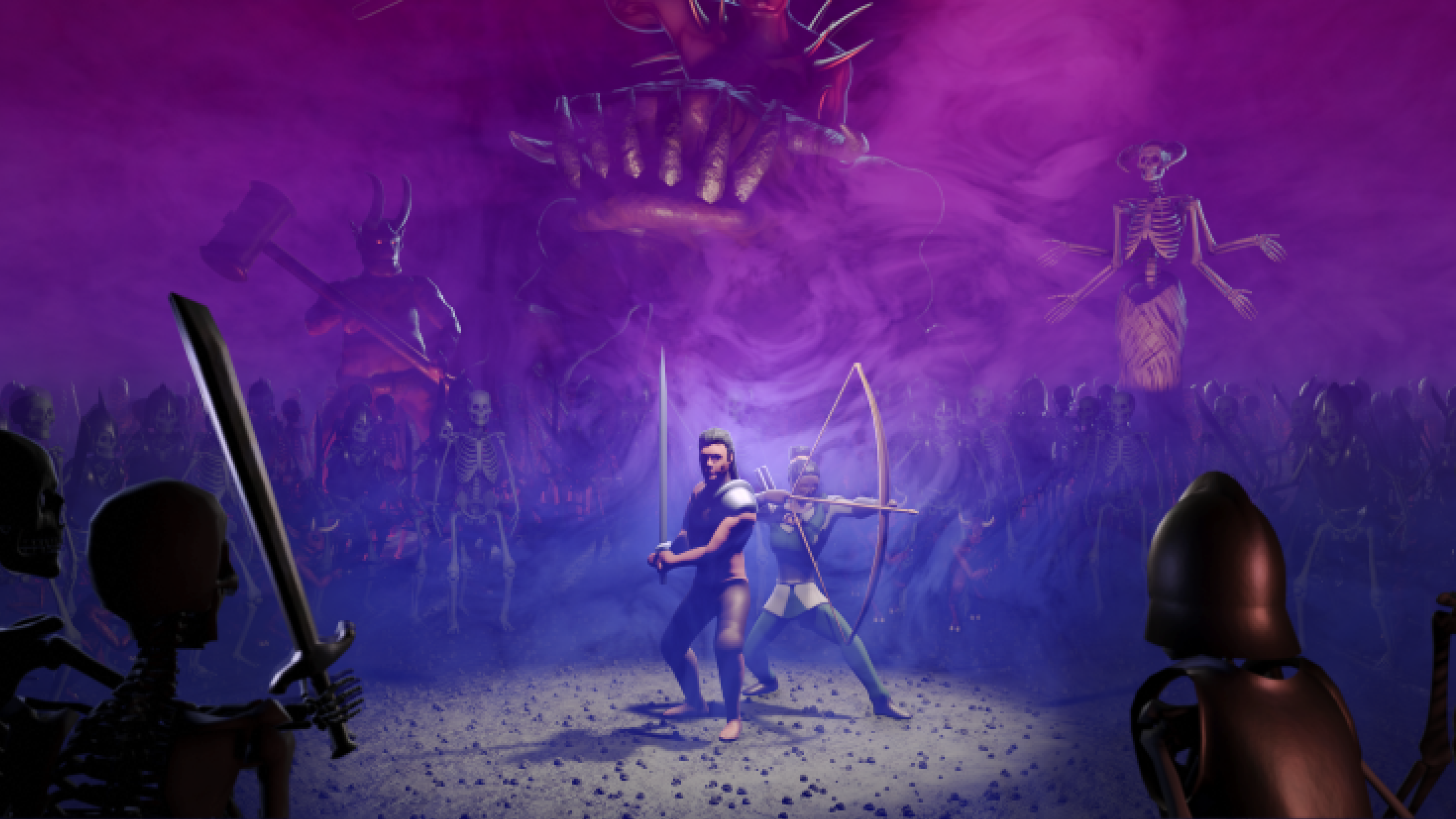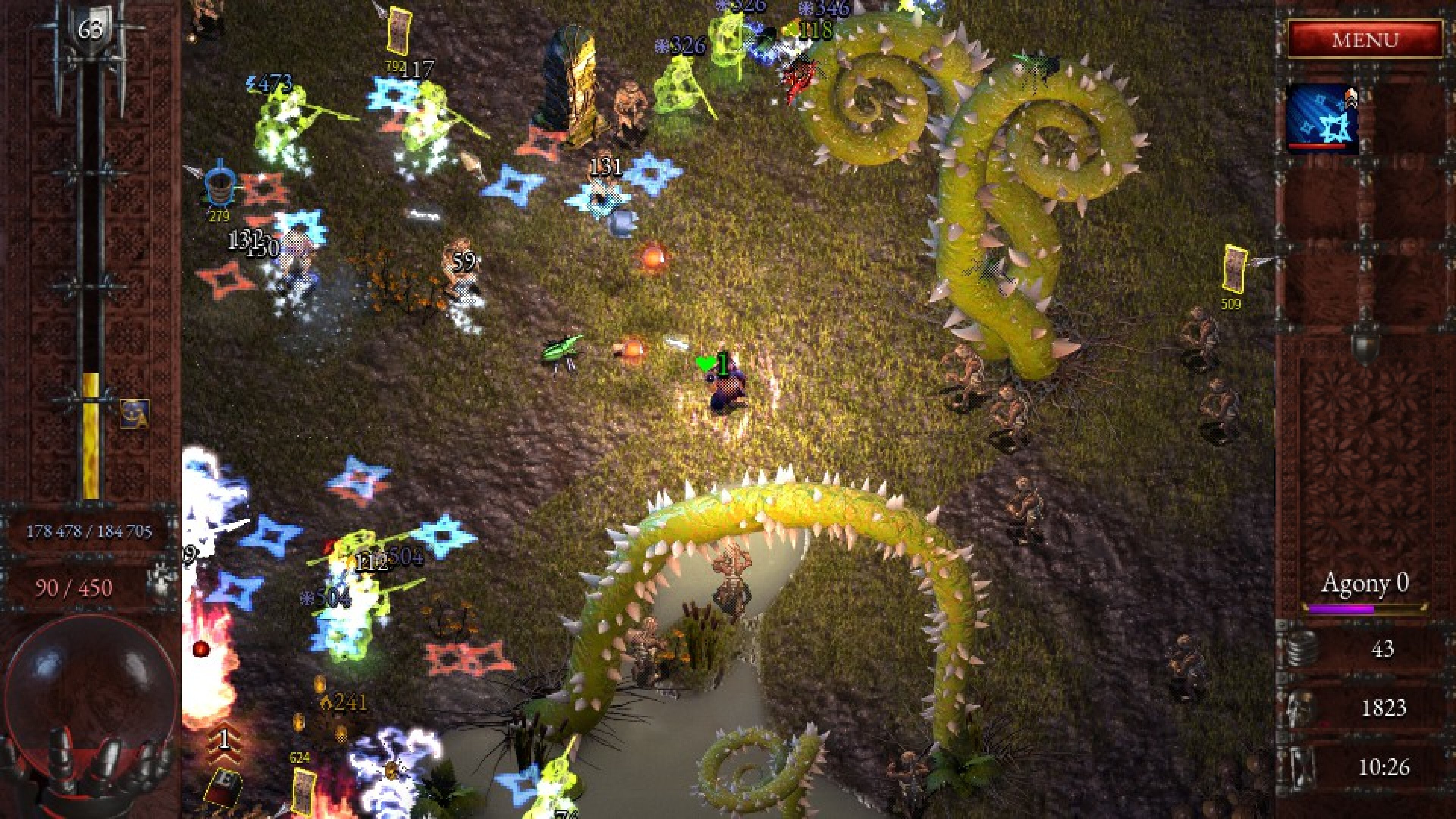
The Boglands drags Halls of Torment into a choking, sunken frontier where survival is measured by how many corpses you stack, not by the clock on the wall. This paid expansion raises the stakes with harsher encounter design, new strategic pillars; Decays, Earth elemental play, and summon‑focused synergies; and two characters that force you to rethink crowd control and multi‑element tactics. Where the base game rewarded creative build experiments, the Boglands punishes sloppy theorycrafting and rewards durability, sustain, and clever use of the environment; it asks a simple question: do your strategies still work when the mud fights back?
What the Boglands adds
• A sprawling new stage: The murky Boglands layer the game with choking roots, drowned spirits, swarms of biting insects, and massive walking trees; encounters here emphasize sustained pressure and attrition over pure speed, forcing players to manage stamina, space, and resource windows.
• Two transformative heroes: The Crone and the Alchemist rewrite playstyles; the Crone excels at summon control and spreading Decay to shred enemy defenses, while the Alchemist crafts multi‑element chaos with customizable mixtures that reward hybrid and status‑driven builds.
• Fresh mechanics that change the meta: The Earth element introduces new interaction paths, and Decay is a persistent armor‑cracking debuff that delivers slow, compounding chip damage; together they push the game toward sustained damage strategies and defensive planning.
• Significant content expansion: Additions include 60+ Boglands quests, 3 class abilities, 12 purpose‑built items, 6 stage‑shaping artifacts, and numerous traits and blessings that tilt builds toward potions, summons, and effect‑damage optimization.
• New progression and challenge hooks: The Boglands unlocks through herb collection and provides its own quest board, integrates with the Shrine of Torment for late‑game runs, and changes boss triggers (Lord appears after 25,000 kills) to reward endurance and long‑term planning.

New characters that change the tempo
• The Crone: A mastery of control and attrition, the Crone summons thorned flora that snare, lash, and sap foes while spreading the Decay affliction across groups. Her toolkit is built to undermine the tankiest enemies; Decay cuts block and defense, her summons scale stronger when kept few and potent rather than numerous, and several abilities convert summoned sustain into offensive windows.
Playstyle: position to force enemies into your roots, stagger summon deployment to amplify buffs, and lean into effects that spread Decay for sustained whittling and disruption.
• The Alchemist: An improvisational damage architect, the Alchemist mixes volatile brews that carry fire, ice, lightning, or earth properties and detonate with layered effects. He rewards hybrid approaches; stacking elements amplifies secondary effect damage, and many of his upgrades convert raw damage bonuses into potent status‑effect output.
Playstyle: craft mixtures to complement your current kit, chain elemental procs to trigger multiplicative effects, and prioritize traits or items that increase Effect Damage and synergy with tinctures for explosive, controlled chaos.
Mechanics and strategic shifts
• Decay and Earth element: Decay is a persistent, armor‑cracking ailment that steadily chips away at enemies while lowering their block and defense. Paired with the new Earth element, it opens powerful interaction paths for DoT, shred, and scaling effect damage, turning long fights into controlled attrition windows where layered effects outvalue burst alone.
• Attrition over speed: The Boglands deliberately inverts the base tempo: encounters favor sustained pressure instead of sprint‑through clears. Faster, spawn‑heavy enemies and dive behaviors force you to bake healing, sustain, or defensive counters into your builds; success comes from outlasting and wearing foes down rather than blasting them quickly.
• Environmental intent: Level design and hazards are no longer background detail but active tools. Mud pits, root snare zones, and collapsing terrain can be used to split groups, stall bosses, or amplify DoT uptime. Smart players funnel foes into hazards and hold chokepoints, converting map features into reliable crowd control and damage multipliers.
• Design consequences for playstyle: These changes reward planning and resiliency; builds that stack sustained damage, healing, or armor‑reduction perform dramatically better here. Conversely, pure glass‑cannon burst builds must adapt with defensive backups or risk being overwhelmed by relentless, low‑telegraph pressure.

Content snapshot
• Stage access and boss rules: The Boglands unlocks after collecting 11 herbs, opening a sprawling swamp stage with its own pacing and hazards. Instead of a fixed timer, the Lord of Blight is summoned once you’ve slain 25,000 enemies, turning progression into an endurance test that rewards sustained clearing and resource management.
• Quest boards and artifacts: A dedicated Boglands quest board offers 60+ region‑specific quests that unlock abilities, characters, and content. Six new artifacts; three Bard‑linked and three generic; reshape runs by changing stage rules, combat pacing, or reward profiles, creating risk/reward choices that dramatically alter each attempt.
• Abilities, items, and trait growth: The DLC adds 3 new class abilities and 12 items purpose‑built for summons, Decay, and multi‑element interaction. Growth traits and blessings that expand potion capacity broaden long‑term build customization, while dozens of new trait and upgrade options deepen synergies and emergent combos.
• Bard and music‑synced systems: A free update introduces the Bard, whose music‑synced abilities change how powers behave with rhythm and intensity. New tracks are added to the OST, Bard Marks let you graft Bard abilities onto other characters, and music intensity scales ability potency; making song selection a tactical choice, not just an aesthetic one.
• Integration with endgame: The Boglands plugs into the Shrine of Torment and the existing progression loop, offering new late‑game targets and quest chains that extend replayability and push players to develop durable, sustain‑focused strategies.

Community reaction and caveats
• A clear design pivot: Players report the Boglands shifts the game’s focus toward tankiness, sustain, and chip‑resilience; what felt like aggressive, high‑tempo clears in the base halls becomes a slog of attrition that rewards defensive planning and resource management.
• Telegraphing and readability issues: Several new foes use low‑telegraph or deceptive movement attacks that rely on pattern recognition rather than obvious cues, increasing the skill floor and privileging experienced players who’ve memorized attack windows.
• Stability and post‑launch volatility: Some users experienced more frequent crashes and balance swings after the DLC; the team has addressed many issues with hotfixes and QoL patches but occasional instability and meta shakeups persist.
• Learning curve and feel mismatch: The Boglands’ pressure mechanics can feel abrupt for players who preferred the base game’s momentum, creating a divide between those who appreciate the harder, endurance‑focused design and those who find it punishing.
• Active developer response: Developers have added Manual Trait Selection, gamepad prompt fixes, rebalance tweaks, and bug patches; ongoing iteration suggests many issues are being triaged but expect further tuning as player feedback accumulates.

Who should pick it up
• Players already invested in Halls of Torment who want a tougher, more tactical endgame and are excited by summon- and element‑centric builds.
• Experimenters and completionists who enjoy new mechanics, quest boards, and artifacts that reshape run design.
• Those who value high‑risk, high‑reward encounters and don’t mind retooling their playstyle toward sustain and attrition.
Final verdict
The Boglands is a bold, confidently designed expansion that steers Halls of Torment from rapid experimentation toward sustained, tactical endurance. It introduces meaningful new systems; the Earth element and Decay; two sharply distinct heroes, and a sprawling swamp stage that forces you to rethink pacing, positioning, and resource planning. The result is a richer strategic palette: summoner‑centric control, multi‑element chaos, and attrition‑style encounters that reward careful preparation and resilient builds. That evolution comes with trade‑offs; steeper onboarding, rougher telegraphing on some foes, and a handful of post‑launch stability and balance blips; but the core additions are well‑crafted and genuinely expand what the game can do. For players who relished the base game’s theorycrafting and want a tougher, more tactical playground to test hard‑earned synergies, The Boglands is a satisfying, often essential DLC.
Watch and Wishlist
• Wishlist the Boglands and base game: Add Halls of Torment and The Boglands to your storefront wishlist to get notified about launch discounts, bundle offers, and platform releases.
• Follow Chasing Carrots: Subscribe to the developer on Steam, PlayStation Store, Xbox Store, and social channels for patch notes, DLC teasers, and roadmap posts.
• Watch patch and DLC deep‑dives: Look for developer livestreams and creator breakdowns that show new enemies, Decay interactions, and boss pacing to decide if the DLC’s tempo fits your playstyle.
• Preview music and OST additions: Sample the new Bard tracks and Boglands compositions (many appear on the OST) to see if the audio direction enhances the vibe you enjoyed in the base game.
• Seek short boss and run clips: Watch quick creator highlights to judge telegraphing, enemy aggression, and whether the Boglands’ attrition focus appeals before buying.
• Check stability and patch cadence: Keep an eye on hotfix notes and community threads for crash fixes and rebalances if you prefer a polished experience at launch.
• Join community channels: Hop into the official Discord or subreddit to ask about meta builds, unlock routes, and the best times to buy (bundle discounts, seasonal sales).
• Wait for bundle deals if undecided: If you’re not ready to dive immediately, watch for the Boglands bundle or seasonal sales that often pair DLC with soundtrack or quality‑of‑life updates.
Key Takeaways
• Major tempo shift: The Boglands pivots Halls of Torment from bursty clears to sustained attrition, rewarding durability, healing, and long‑term planning.
• Meaningful new mechanics: The Earth element and persistent Decay introduce armor‑shredding, DoT, and new interaction paths that favor layered effect strategies.
• Two transformative characters: The Crone (summon + Decay control) and the Alchemist (multi‑element, effect‑driven damage) reshape build architecture and play priorities.
• Substantial content haul: 60+ region quests, 3 abilities, 12 items, 6 artifacts, new traits and blessings expand late‑game variety and emergent combos.
• Endurance‑focused stage design: Boglands maps and the Lord of Blight’s kill‑count trigger push runs toward long clears and resource management rather than speed.
• Environmental strategy matters: New hazards and map intent reward funneling, chokepoint play, and tactical use of terrain.
• Higher difficulty and learning curve: Faster, spawn‑heavy foes, low‑telegraph attacks, and chip damage increase the skill and experience premium.
• Early post‑launch volatility: Some players reported stability and balance issues early on, but the developer is actively patching and adding QoL fixes.
• Best for invested players: Recommended for fans who enjoyed the base game’s theorycrafting and want a tougher, more tactical expansion; casual players may prefer to wait for further tuning or bundle deals.
Game Information:
Developer & Publisher: Chasing Carrots
Platforms: Xbox Series X (reviewed), PlayStation 5, PC - Steam
Release Date: October 28, 2025
Score: 8.0 / 10
Halls of Torment: The Boglands earns an 8.0 for expanding a strong roguelite foundation with bold, mechanically rich content that changes how you play. The DLC delivers fresh systems, two distinctive characters, and a compelling new stage that rewards thoughtful builds and endurance; but it also raises the difficulty curve and exposes post‑launch rough edges that temper its polish.